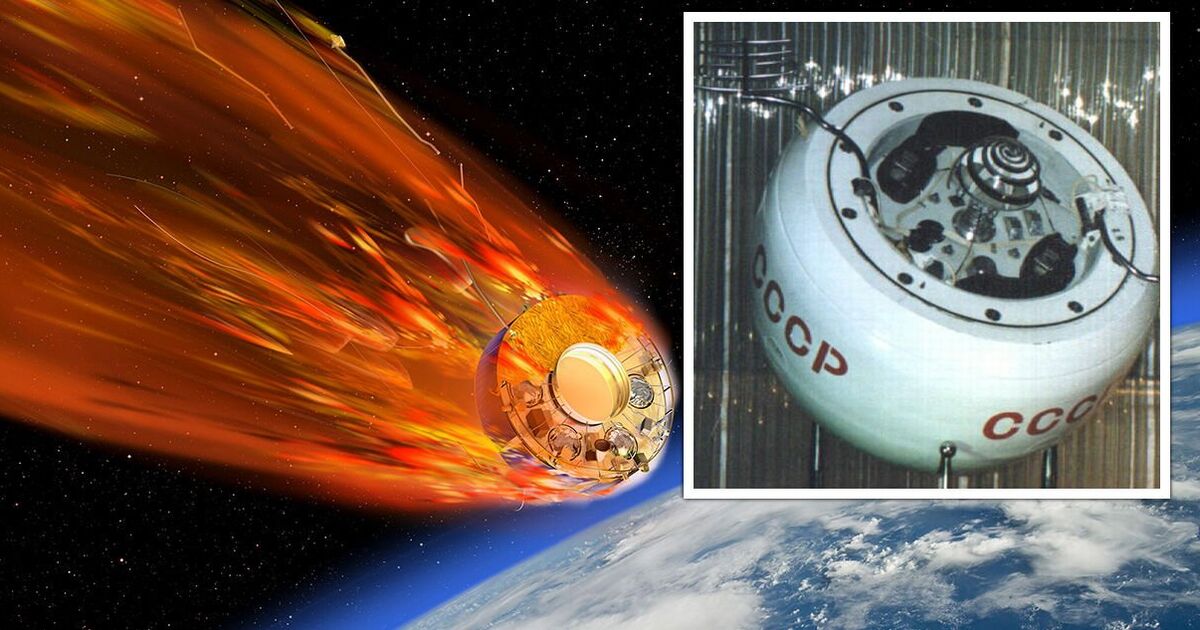

A failed Soviet spacecraft launched more than half a century ago is expected to plummet back to Earth early on Saturday, just one day after Vladimir Putin’s Victory Day parade in Moscow. The reentry window for the Cosmos 482 Venus lander opens at 6am UTC (7am UK time), with a three-hour margin of error. According to NASA, potential impact zones include “the Pacific, Atlantic, and Indian Oceans,” but the decaying spacecraft could also come down over “parts of North and South America, Europe, Asia, or Australia”.
What happens next remains unclear, because unlike typical space junk, Cosmos 482 was designed to survive far worse than Earth’s atmosphere. A NASA spokesman warned: “Because the probe was designed to withstand entry into the Venus atmosphere, it is possible the probe will survive reentry at Earth and reach the surface.” The spacecraft was part of the Soviet Union’s ambitious interplanetary programme in the early 1970s. Launched on March 31, 1972—just four days after its nearly identical sister mission Venera 8—the aim was to deliver a robotic lander to the surface of Venus.
While Venera 8 successfully reached its target and transmitted 50 minutes of data from the planet’s surface, Cosmos 482 never got that far.
After a successful launch into a temporary Earth parking orbit, the onboard propulsion system was meant to fire and hurl the craft towards Venus. Instead, a malfunction left the probe trapped in a highly elliptical orbit ranging from 210km to 9,800km above Earth’s surface.
The NASA spokesman explained: “It separated into four pieces, two of which remained in low Earth orbit and decayed within 48 hours, and two pieces (presumably the lander probe and detached upper stage engine unit) went into a higher 210 x 9800 km orbit.”
Those smaller components reentered Earth's atmosphere and burned up almost immediately. But the lander—heavily shielded against the crushing pressure and searing heat of Venus—has remained in orbit ever since, slowly descending.
The probe itself weighs nearly 500kg and is shaped like a heavy, armoured sphere. The casing was built to withstand temperatures over 450°C and pressures more than 90 times greater than Earth’s atmosphere. It was designed to endure impact, deploy a 2.5-square-metre parachute, and transmit scientific data from the surface of Venus.
According to the NASA spokesman the lander probe "was an insulated spherical pressure vessel of similar design to the Venera 7 probe. It had a top shell that would be jettisoned on atmospheric entry to deploy the 2.5 square meter parachute and expose the antenna and instruments.”
Whether the parachute or instrument shell would survive Earth reentry is highly doubtful—but the titanium casing could plausibly reach the ground intact.
Experts say tracking the probe’s final descent will be difficult until the last moments. The NASA spokesman said: “The uncertainty will be fairly significant right up to reentry," underscoring the difficulty in modelling an object of this shape and mass at this altitude.
Cosmos 482 was given its name because of Soviet policy at the time: any planetary mission that failed to leave Earth orbit was instead designated as a “Cosmos” satellite. Despite its intended target, official Soviet records never acknowledged that it was a Venus mission.
The craft was part of a long line of Venus probes launched during the Cold War space race. While many failed, the Soviets ultimately became the only country to land functioning instruments on the surface of Earth’s closest planetary neighbour.
A post on X by the UK Space Agency said the National Space Operations Centre will be monitoring the re-entry in the UK.
The EU Space Surveillance and Tracking (EU SST) Operations Centres said it was "actively monitoring the uncontrolled re-entry into Earth’s atmosphere of the Cosmos-482 Descent Craft, a Soviet-era spacecraft launched in 1972 and intended to land on Venus.
"The EU SST network of contributing sensors is closely following the object to refine the re-entry window, which is currently estimated to be on 10 May, with an uncertainty of ±4 hours.”
Now, more than five decades later, one of those relics is finally on its way back—raising the remote but real possibility that a piece of 1970s Soviet hardware could crash-land on Earth in 2025.